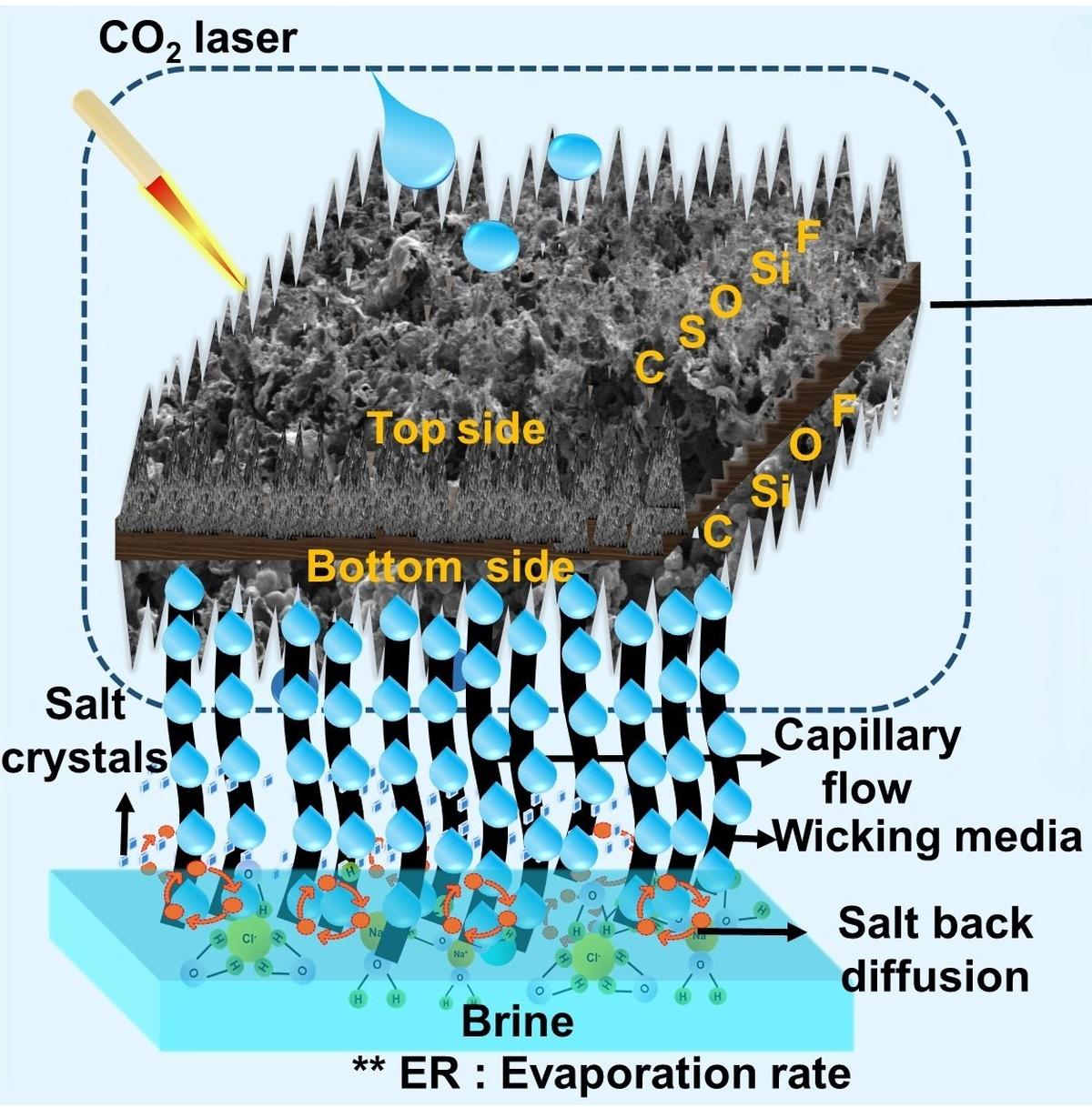Context:
Researchers at the Indian Institute of Technology Bombay have developed a new material called Dual-Sided Superhydrophobic Laser-Induced Graphene (DSLIG). This material is designed to improve the efficiency of water desalination processes, which could play a role in addressing global freshwater scarcity.
Freshwater Scarcity and Desalination
Despite water covering 71% of the Earth's surface, only 3% of it is freshwater, with less than 0.05% readily accessible for human use. Desalination, the process of removing salt from seawater, is increasingly seen as a key solution to water scarcity.
· However, current desalination methods face challenges, including high energy consumption, inefficiency, and environmental concerns such as the disposal of brine (concentrated salt solution).
Challenges with Traditional Desalination Methods: Solar desalination systems, including interfacial evaporation systems, have gained attention for their low environmental impact. These systems focus solar energy on a thin layer of water, improving energy efficiency.
o However, issues like inconsistent sunlight, particularly on cloudy days, and salt deposition on evaporator surfaces have hindered the performance of these systems.
o Salt crystals can accumulate on evaporator surfaces, reducing efficiency over time. Furthermore, fluctuations in solar radiation during the day affect the desalination process, with evaporation rates peaking around 2 pm, when solar intensity is highest.
About Dual-Sided Superhydrophobic Laser-Induced Graphene (DSLIG)
Dual-Sided Superhydrophobic Laser-Induced Graphene (DSLIG) is made from a two-layer structure: polyvinylidene fluoride (PVDF) and poly(ether sulfone) (PES). The PVDF layer provides hydrophobic properties, while PES offers mechanical stability.
· DSLIG Laser engraving technology is used to enhance the material’s performance, enabling it to operate effectively under both solar and electric heating. It combines solar and electric (Joule) heating, ensuring consistent performance despite variations in sunlight.
· This dual heating approach allows the evaporator to maintain stable temperatures, providing reliable desalination even when sunlight is unavailable.
· Additionally, DSLIG exhibits superhydrophobic properties, which prevent salt from adhering to the surface, reducing salt buildup and enhancing the long-term efficiency of the evaporator.
Future Potential
- Laboratory tests have shown promising results, with DSLIG being effective for desalinating seawater, brackish water, and industrial wastewater.
- However, further field testing and funding are required for large-scale applications. Nonetheless, its low carbon footprint, cost-effectiveness, and ability to handle concentrated salt solutions suggest it could be an important tool in sustainable desalination and wastewater treatment in the future.
Conclusion
The development of DSLIG represents a promising step in improving desalination efficiency. By addressing key challenges associated with traditional methods, it offers potential for more sustainable and reliable desalination processes to help mitigate freshwater scarcity worldwide.







